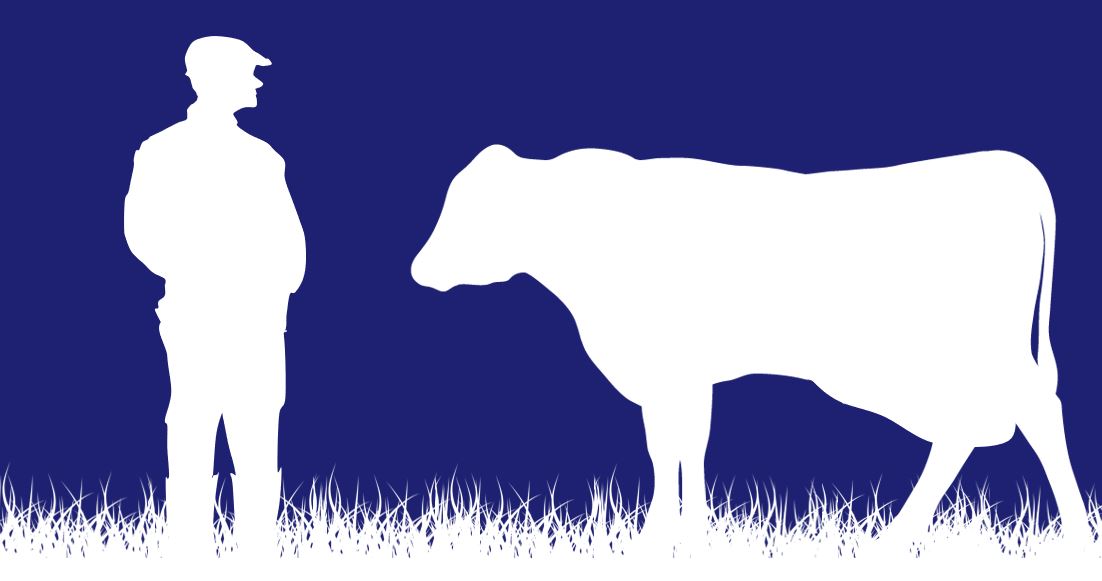Who is Reece Walker?
Reece Walker is one of Meadow Quality’s many longstanding customers. Earlier this year – before the UK locked down, Flo visited Reece at his farm in Warwickshire. This is what Flo learned from their conversation…
Reece was born into farming. Raised on the family farm, Reece helped his father with operations alongside his eldest brother. With such a background, it is no surprise that Reece was passionate about farming. So, after school, he attended Harper Adams and received a Higher National Diploma. Following his graduation, Reece was keen to take on the challenge of running his own farm.
The Farm
The farm was first built in 2004, nestled in the beautiful Warwickshire countryside. The owners at the time invested in dairy equipment, setting up a Dairy Master milking parlour in an airy, high ceilinged shed, with cubicles around the circumference.
In 2013, Reece bought the 370-acre farm, leaving his father and brother to run the family farm in Gloucestershire. He was keen to continue with the farm’s dairy process and received his first batch of 150 calves on 22nd December. He remarked that Christmas never came that year – with a new system, less land and 150 calves, the season was a blur.
Reece now works with 270 Holstein Friesian milking cows and 70 bulling heifers. His two main focuses are milking and calving. Without a bull on the farm, his cows and heifers are artificially inseminated. He uses semen from bulls listed in Meadow Quality’s Superior Sires brochure, purchased via Genus.
Calving
Reece starts calving in Autumn, giving him more capacity to house the calves and control their diets whilst the seasons turn. In order to promote health and provide comfort to calving cows, he introduces a specialised transition diet. He beds the in-calf cows on deep, loose straw. As each calf is born, Reece takes each calf away, to help prevent Johne’s. The calves are placed into individual pens and bottle-fed colostrum. Each calf receives 3 bottles of colostrum over a 36-hour period. The first colostrum is given within the first 20 minutes of the calf’s life and Reece aims to achieve 2.5 litres within the first 2 hours. He prefers bottle feeding as it is stress-free and, in his opinion, makes it easier to move calves on to the bucket.
Parlour games
As calving comes to an end, the focus moves back to the milking parlour. With 270 cows in milk, there is little (to no) rest to be had between jobs! Reece told Flo that there is no let-up in dairy farming. It is relentless and often involves working in difficult conditions. However, he enjoys the challenges of the job and relishes the satisfaction of seeing it through.
The Future
Reece has big plans for his farm. In five years’ time, he aims to make progressions using modern farm technology. He has already invested in a drafting gate and has noticed a large saving in labour costs, by removing the requirement of a second person on the job. Further to his investment in technology, Reece aims to increase capacity by building a new shed, specifically for dry cows. A new shed, he said, can allow him to increase the herd to 280 cows in milk.
Beyond his own farm, Reece can see the future of hands-on farming becoming less labour intensive and time consuming due to advances in technology. Technology can increase efficiency and reduce the need for staff, reducing ongoing costs for farmers. This has pros and cons, Reece says. He also told Flo that, on the flip side, legislation is slowing the progress of the industry and that rules, regulations and industry requirements are moving towards becoming less beneficial for livestock due to their time-consuming nature. Farmers’ focus is being pulled from their own welfare practises, towards administration.


